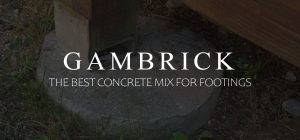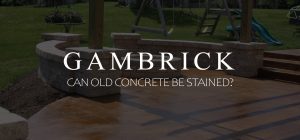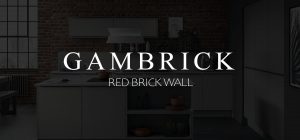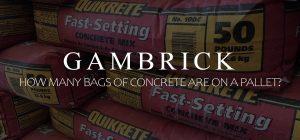

By John Mazzuca | About | More Posts |
John Mazzuca is a custom home builder with over 25 years experience in the construction industry. John has designed, managed, and built hundreds of homes & construction projects.
Retaining Wall Fence
Do you have or are you building a retaining wall? They’re fantastic at holding back earth and look great. I especially like when they’re built with natural stone or solid concrete. But they don’t do a thing for the areas above the wall. This is where a retaining wall fence is used. By combining a retaining wall with a fence you both hold back the earth and secure the upper area of the property. Fences add security and safety by keeping people out and preventing falls over the walls steep drop. The retaining wall handles earth retention and provides a solid foundation for the fence. They go together really well and look great when done right.
A retaining wall can be enhanced with a fence. You can build one right on top of the wall or behind it. Retaining walls hold back earth and step down the property’s grade. But they also create a drop that’s easy to fall over. This is OK in some situations but it can also be a safety hazard. A fence paired with a retaining wall fixes this.
A retaining wall can be a solid foundation for a fence. If you’re using stone or concrete, the fence can usually be bolted right to the top of the wall. In the case of poured concrete, you can install the fence posts in the wall as you pour the concrete. This is a very strong way to do it.
For fences built behind the retaining wall, concrete footings are typically used to secure the posts. These footings can even be tied into the walls construction for even more support.
Ahead we’ll discuss more about fences used with retaining walls and answer the most common questions we’re asked.
What’s A Retaining Wall?
A retaining wall is a strong, rigid structure that’s used to retain soil laterally. They’re designed to hold the soil back in ways it wouldn’t do on its own. This is sometimes called terracing.
Let’s say you have a yard that slopes down from one end to the other, but you want it to be flat. A great way to accomplish this is with a retaining wall. When the grade is leveled, the high section has to be supported or the soil will erode. This is because soil alone can’t support a steep drop.
Flat areas of ground created by retaining walls are used to build homes, gardens, backyards and even roads.
Retaining walls can be built out of wood, stone, blocks or concrete. Some are only a few feet high but others can be over 1o feet tall.
Keep in mind that high retaining walls should be designed by an engineer and typically require a permit.
When a retaining wall is built, it also creates a steep drop from the high point to the new flat area. This is where a fence is used. The fence makes a high retaining wall much safer by preventing falls.
Retaining walls can carry a lot of weight which is made worse by water. If you build one, make sure to include proper drainage behind the wall. This is very important to keep the wall strong and secure. The most common cause of wall failure I see is due to poor drainage.
A Retaining Wall With A Fence
A retaining wall can have a fence built in front, behind, or on top of it. A fence provides not only more security, but also safety and aesthetics.
Unless they’re built really high, a wall alone doesn’t provide much security. The average residential wall is under 3 feet tall. That’s not hard to climb over. But the average fence is 6-8 feet. You can make up that height difference by adding a fence.
If you plan on building a fence with your retaining wall, it’s important to figure out how the fence will be supported. Almost any wall material can support a fence, including wood, poured concrete, stone and block. But how the wall is built means more than the material it’s built out of.
If you’re building the wall yourself, incorporate the fence as part of your design. This makes building the fence much easier. If your using poured concrete, the fence can actually be built right into the concrete. However, if you’re installing a fence on a wall you didn’t build, consult with an engineer to make sure it’s strong enough.
Can your retaining wall support a new fence? If the wall isn’t sturdy enough it may not be able to. In these cases the fence should be built behind the wall and not on top. This is the best way to build a retaining wall with a fence when the wall can’t support it because the fence can have it’s own footings.
If you still want the fence built on top of the wall even though it’s not strong enough to support it, there’s an option. Reinforce the wall. You’ll have to dig behind the wall and add whatever support the fence and wall needs.
Fence On Top Of A Retaining Wall
One of my favorite retaining wall fence ideas is building it on top. I think it looks really nice when the two are integrated together into a single design. And the wall portion makes a great foundation if you design and build it correctly.
A benefit of building the fence right on top of the wall is that it takes up less space in the yard. If you build the fence a few feet behind the wall, you lose that amount of space. This can be an issue with small yards.
Another benefit is maintenance. When the fence is set back, you still have to maintain the property between the fence and wall edge. Typically this is just grass but you could also plant a row of bushes or flowers. Remember, anything you plant in this area will have to be maintained later which is hard because of the location. It’s easier when this space is either very small or really large.
A wrought iron, wood or vinyl fence built on top of a strong retaining wall is a really nice look. But keep in mind that fence maintenance is harder because of the location. I recommend to all of our clients that they install a maintenance free fence. Iron or vinyl are great choices but wood can be tricky.
Building a fence on top of a retaining wall is all about the strength of the wall and how you secure the posts. The wall is the foundation and support system for the fence. So you need a really strong wall and brackets to hold the posts in place.
Poured concrete walls are very easy to built with a fence on top because the posts can be set right into the concrete.
Building A Fence On Top Of A Retaining Wall
It’s very common to build a fence on top of a retaining wall. And in many locations it’s required. High walls are dangerous because they create a steep drop someone could fall off of, but a fence fixes that.
The two most important things to consider are the strength of the wall and how to secure the fence to the wall. The wall has to be string enough to support your fence and the fence has to be securely attached to the wall. If either of these are lacking, the wall and/or fence could fail. We’ll discuss different methods next.
Surface mounting, face mounting, embedding a fence, and using a post-in system are all options for securing a fence to your wall. Before you choose, consider the strength of your retaining wall, the material it’s made of, the design, and the height of your fence.
Each strategy has its own set of pros and cons. Before beginning a project like this, you should consult an engineer and your local building department. In most cases, higher retaining walls will need an engineers design and permits.
Below we’ll go over the different ways you can attach a fence to a retaining wall.
Mounted On The Surface
Surface mounted fences are ideal for retaining walls that have already been built. This method involves using mounting brackets and anchor bolts to secure the fence to the wall. The mounting brackets bolt down into the wall and then the posts are bolted to the brackets. Both the wall and brackets have to be strong enough to support the load of the fence.
To use this method, you have to stay within the limit of the brackets. Most surface mount brackets only allow a 3-4 foot high fence.
Mounted On The face
The fence can also be mounted to the side, or face, of the retaining wall rather than the top. To do it this way, you’ll need side mounting brackets and anchor bolts. It’s basically the same method as surface mounting the fence only you’re bolting to the sides rather than the top.
Face mounting the fence can be stronger than surface mounting it because you can secure more of the post. With surface mounting, the mounting bracket only comes up about 6 inches from the ground. This means only 6 inches of post are secured. But with a face mount, you could run the post down the face 2 feet if you wanted to and secure it with multiple brackets. These options aren’t available with surface mounting.
Embedded Posts
Fence posts can be embedded right into the wall instead of using a mounting bracket. This is a very strong way to build a fence because you can bury the posts deep inside the wall. However, it works best when you’re building a new wall.
Poured concrete retaining walls are a great way to use embedded posts. The posts can be set in place as you pour your concrete which essentially makes the fence a part of the wall. With iron posts, you can even tie the fence posts to the walls rebar.
Embedding a fence post in an old wall is harder but not impossible. I would only recommend doing it with an iron fence that has slim posts. Drill holes deep into the retaining wall and then clean them out. Once complete, you can slip in the metal fence posts. Use anchoring cement by Simpson inside the hole to bond the post to the concrete.
Another method is using steel tubing. Drill a wider hole into the wall and secure a steel tube with anchoring cement. These are the same tubes that hold up a chain link fence. Once the tubes set in place, you can install a vinyl or wood sleeve around it. This method provides the strength of an embedded fence post with the look of a vinyl or wood fence.
Cantilever
A cantilevered support is typically used only when the wall can’t support the fence. Concrete or steel beams are buried under the ground and anchored with footings behind the wall. From the side they look like a big L shape.
The cantilevered part of the L runs to the edge of the wall and supports the fence. The other part of the L is under ground and anchors the entire structure. This allows the fence to be built on top of the wall without adding any weight to the wall itself.
How High Can A Retaining Wall Fence Be?
There are quite a few considerations when it comes to the height of a retaining wall fence. We’ll go over some of the most common.
Consider the strength of your retaining wall and the fence design when determining the height of your fence.
- If you’re going to build on top of your wall, make sure it’s strong enough to sustain both the weight of the fence and the lateral loads.
- Lateral loads are much higher when the fence is solid because wind pushes up against the fence like a sail.
- Fences that are not solid, like iron or chain link, have much less lateral load because wind passes through them.
- Consider the mounting bracket. Many only allow a height of 3-4 feet. But side mounted brackets can go much higher.
Codes and HOA regulations matter when setting the fence height. This is especially true when the fence is in the front yard.
In many localities, the retaining wall counts toward the max height of the fence. Essentially, the wall is considered part of the fence. So if there is a max fence height of 6 feet from grade, that could mean 6 feet including both the wall and fence. It all depends on what side of the fence they’re measuring height from.
Also think about what you want the fence for. Retaining wall fences that are for appearance or safety are generally built lower than home security fences. In general, all you need for safety is 3-4 feet. The fence acts more as a railing than a true fence.
When Is It Necessary To Build A Fence On Top Of A Retaining Wall?
There are a few reasons why you should construct a fence on top of your retaining wall. We’ve already discussed security and privacy. Another reason you might want a fence on top of your wall is to give your landscape a unique aspect, add security, or provide an extra barrier for your property. Is it necessary to have a fence on top of your retaining wall in some situations?
You will be compelled to construct a fence if your safety is in jeopardy. A fence on top of your retaining wall is a wonderful option if a path, seating area, or another section of the yard is behind it. This keeps people and animals from collapsing or tumbling off the other side. Any retaining wall above 30 inches high is required to include a fence, according to some international building rules.
Discuss your intentions with your neighbors if you plan to utilize your fence and retaining wall as a property barrier. You want to make sure that what you’re doing won’t generate any more problems for others around you. Thorough planning and approvals prior to construction can save you time and money in the long run.
What’s The Best Way To Build A Retaining Wall Fence?
The best way to build a retaining wall fence depends on the wall and fence. You have to make sure the wall is string enough to support the fence design you plan to build. This also ties into setting the fence’s height. If you have a super strong new wall, you can probably build just about any fence, but if it’s older or weak, you’ll be limited.
Don’t overdo it. If the wall or mounting method can’t support the fence, the wall and/or fence could fail.
- If the wall is strong enough to support the fence, I prefer building the fence right on top of the wall. Consider both the wall and fence design when deciding on this. If you’re unsure, consult an engineer.
- Th strongest method is embedding the posts inside the wall. I also like how this looks the best because you don’t see mounting brackets. The easiest way to do this is when building a new retaining wall.
- If the wall can’t support the fence, build it a few feet back. This allows you to pour concrete footings to support the fence.
- When it comes time to build the fence, always start with the posts. Set all your posts and then wok on the panels.
Don’t forget to consider lateral loads, not just the weight of the fence. Wind can create a lot of lateral force that the wall and mounting method will now have to support.
Can You Build A Retaining Wall Next To A Fence?
Yes, a retaining wall can be built against a fence.
Adding a retaining wall against your fence has functional and aesthetic benefits. Use these walls to make raised garden beds or planters for small bushes. Select wall blocks that work with your landscaping and house color scheme.
When building a retaining wall right next to an existing fence, consider how the fence is supported. You don’t want to undermine or weaken the fence. If the fence posts are supported by concrete footings, you may be able to tie those into the walls construction which would strengthen both the fence and wall.
Remember lateral loads. If the fence is solid, wind creates a lot of lateral force against it which stresses the footings. If the wall is pushed right against the post footings then it may also stress the wall. This is where an engineer can help you with the design. Hollow fences don’t have as much lateral force to consider because wind passes through them.
How Close To A Retaining Wall Can I Build A Fence?
In some cases you can build a fence right up to a retaining wall. Although in most cases it’s recommend you stay a few feet off. Consult an engineer to be sure. They’ll examine the wall and tell you if the top can withstand the extra force brought on by the new fence.
Fences support lateral forces because of the wind, especially if the fence is solid. Fence design plays a major role in this. A high solid fence creates a lot more lateral force than a short hollow one.
- In order to determine how close to the wall you can build the fence, you have to examine the wall. Some walls can sustain the extra load a close fence will place on it and some can’t. If the wall is old and weak, I’d build the fence 2-3 feet back from the walls edge. This is enough space that the fence footings won’t interfere with the wall.
- If the wall is new and very strong, you may be able to install the fence right up the the wall. Especially if the wall is poured concrete.
Consult an engineer to be sure. They’ll examine the wall and determine if it can support the load. As a general rule, the closer to the wall you build the fence, the more force is placed on the wall.
Consider what you’ll do with the space between the fence and the wall. You’ll may have to landscape or use it to maintain the fence. For this reason, it’s sometimes better to go a little bigger rather than smaller. A foot doesn’t provide much room to work. If I can’t build the fence right up to the wall, I usually set it about 3 feet back.
Why Would You Need a Retaining Wall Fence?
There are lots of reasons for wanting a retaining wall fence. Not only do they look great, but also provide quite a few benefits.
Safety
Retaining walls can be built pretty high. This not only retains earth and flattens the ground below the wall, but also creates a steep drop at the top. This can be a major safety hazard. To prevent falls, add a fence at the top of the wall.
In most cases, any retaining wall above 30 inches high must have guards (a fence), according to International Building Code 1015.2. A fence built on top of the retaining wall acts as a guard rail for anyone on that side of the wall.
Privacy
A retaining wall fence can increase privacy if the fence is solid. keep this in mind when designing the fence and wall. Solid fences have to carry more lateral loads due to wind so you’ll need stronger supports.
The height of a privacy fence is an important consideration too. The higher a solid fence is built, the stronger the wall and mounts must be.
Security
A fence adds security to the home too. It’s an additional barrier a thief will have to overcome before getting to your house. The higher and harder to climb it is, the more security it provides.
Privacy also provides a bit of additional security. This is why most of the security fences we install are either solid or built behind lots of landscaping. A retaining wall with a fence and thick landscaping is a great deterrent.
Curb Appeal
A retaining wall fence can be a beautiful design and a big bump to your curb appeal. When designing the wall and fence, don’t just consider function and strength. Also take the time to think about how it all looks. I personally love how a masonry wall and fence look together. I prefer the look to just a really high fence. The two elements together help break up the design and hide the height.
Choose two materials that work well together. Luckily, just about any masonry material goes with wood, black iron or white vinyl.
Choosing A Retaining Wall Fence
It’s important to consider the type of retaining wall fence you want to build. A chain link or wrought iron fence is very different from wood or vinyl.
Wood, concrete or block are the most common material used to build a retaining wall. When selecting a fence, keep the wall material in mind. Also consider how you’ll be building the fence. If it will be mounted to the wall that’s very different than if it’ll be installed 3 feet behind it.
- Luckily almost any material goes with masonry because the colors are neutral. Black, wood, metal and white are the most common fence colors.
- Consider maintenance. If the fence is on top of a high wall where maintenance is difficult, don’t choose painted wood.
- Don’t forget about height restrictions.
- Make sure the wall can support the fence material you want to use.
- Consider lateral forces caused by wind.
- Safety, security, privacy, appearance and strength are the most common concerns when selecting any fence.
There are quite a few things to consider when choosing a retaining wall fence. I always start with the wall itself. Especially if I’m adding a fence to an existing retaining wall because an older wall may limit my fence choices.
I also always consider appearance. Everything used on a home has to not only function properly but also look good. Don’t forget curb appeal.
Can A Fence Be Used As A Retaining Wall?
In most cases a fence should not be used as a retaining wall. Fences are not designed to withstand the lateral forces created by earth, water and soil. But, if designed and built the right way, a fence could retain a small amount of dirt using a kickboard.
Fence kickboards, sometimes known as “rot boards,” are horizontal boards at the bottom of the fence. They touch the ground instead of the fence panels which is why they’re called rot boards. These kickboards will rot instead of the actual fence.
Their main purpose is to extend the life of a fence by preventing rot. But they also work great at retaining some dirt.
Once the posts are set in place, install a kickboard between the posts at the very bottom. Treated wood works great as a kickboard. 2×6, 2×8, 2×10, and 2×12 are all good sizes. Use the one that matches the amount of dirt you want to use.
I like to use multiple layers of wood. For example, if I’m using a 4×4 post I’ll use 2 boards. This provides more strength.
Kickboards also provide a little more strength at the base of the fence. They can be fastened to the posts differently than the rest of the fence posts because they’re under dirt. I’ll typically use a much bigger, uglier lag screw. You can also stake a kickboard into the ground for even more support. Use either long wooden or metal steaks.
When Is A Fence Required On Top Of A Retaining Wall?
A fence is generally required on top of a retaining wall when the drop is over 30 inches.
Remember, a retaining wall not only holds back earth and flattens the area at the base of the wall, but it also creates a steep drop at the top. A fence will help prevent people or pets from falling off the wall. International Building Code 1015.2 requires guards (a fence) on any retaining wall over 30″ tall. This probably applies to your new wall too.
Conclusion
Fences can be built above, in front of, or behind a retaining wall to increase safety, security, privacy and curb appeal. But always consider the walls construction and design and the purpose for the fence before building anything. Find out if there are restrictions by your local building department or HOA. And consider consulting an engineer. Especially if the wall is high.
Summary: Fence As A Retaining Wall
Do you have or are you building a retaining wall? They’re fantastic at holding back earth and look great. I especially like when they’re built with natural stone or solid concrete. But they don’t do a thing for the areas above the wall. This is where a retaining wall fence is used. By combining a retaining wall with a fence you both hold back the earth and secure the upper area of the property. Fences add security and safety by keeping people out and preventing falls over the walls steep drop. The retaining wall handles earth retention and provides a solid foundation for the fence. They go together really well and look great when done right.
A retaining wall can be enhanced with a fence. You can build one right on top of the wall or behind it. Retaining walls hold back earth and step down the property’s grade. But they also create a drop that’s easy to fall over. This is OK in some situations but it can also be a safety hazard. A fence paired with a retaining wall fixes this.
A retaining wall can be a solid foundation for a fence. If you’re using stone or concrete, the fence can usually be bolted right to the top of the wall. In the case of poured concrete, you can install the fence posts in the wall as you pour the concrete. This is a very strong way to do it.
For fences built behind the retaining wall, concrete footings are typically used to secure the posts. These footings can even be tied into the walls construction for even more support.
If you have any questions or comments about retaining wall fences email or leave a comment below.

John Mazzuca | About | More Posts |
Custom Home Builder
John Mazzuca is a custom home designer and builder at Gambrick with over 25 years experience in the construction industry. John has designed, built and/or remodeled hundreds of homes, small buildings, and commercial projects. He writes about business, real estate, home building, and household electronics. His work has been featured in Fox Business, Better Homes & Garden, House Beautiful, and more.




















